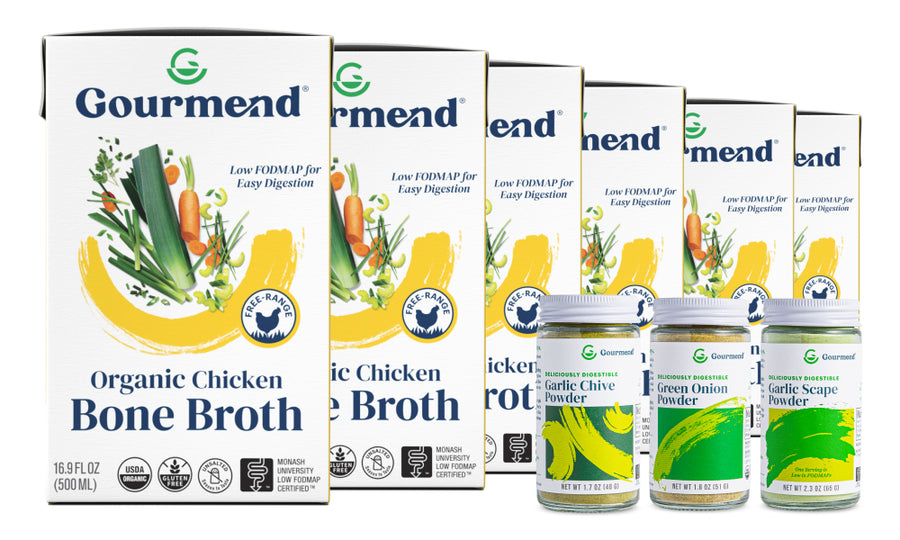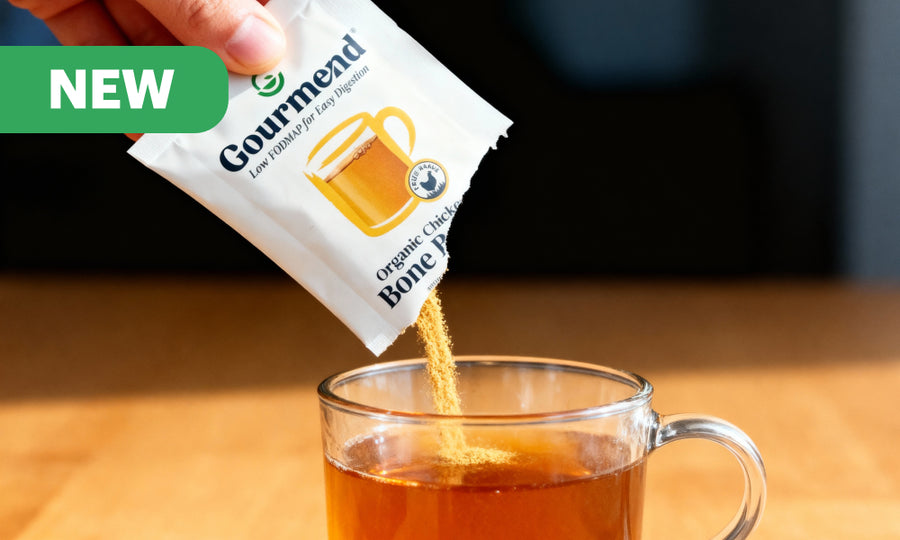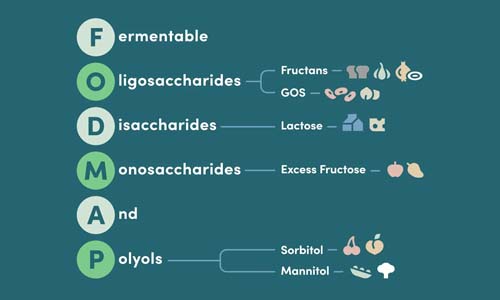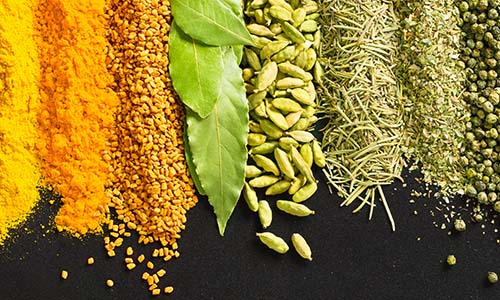Low FODMAP Sweeteners: Complete Guide to Safe Options
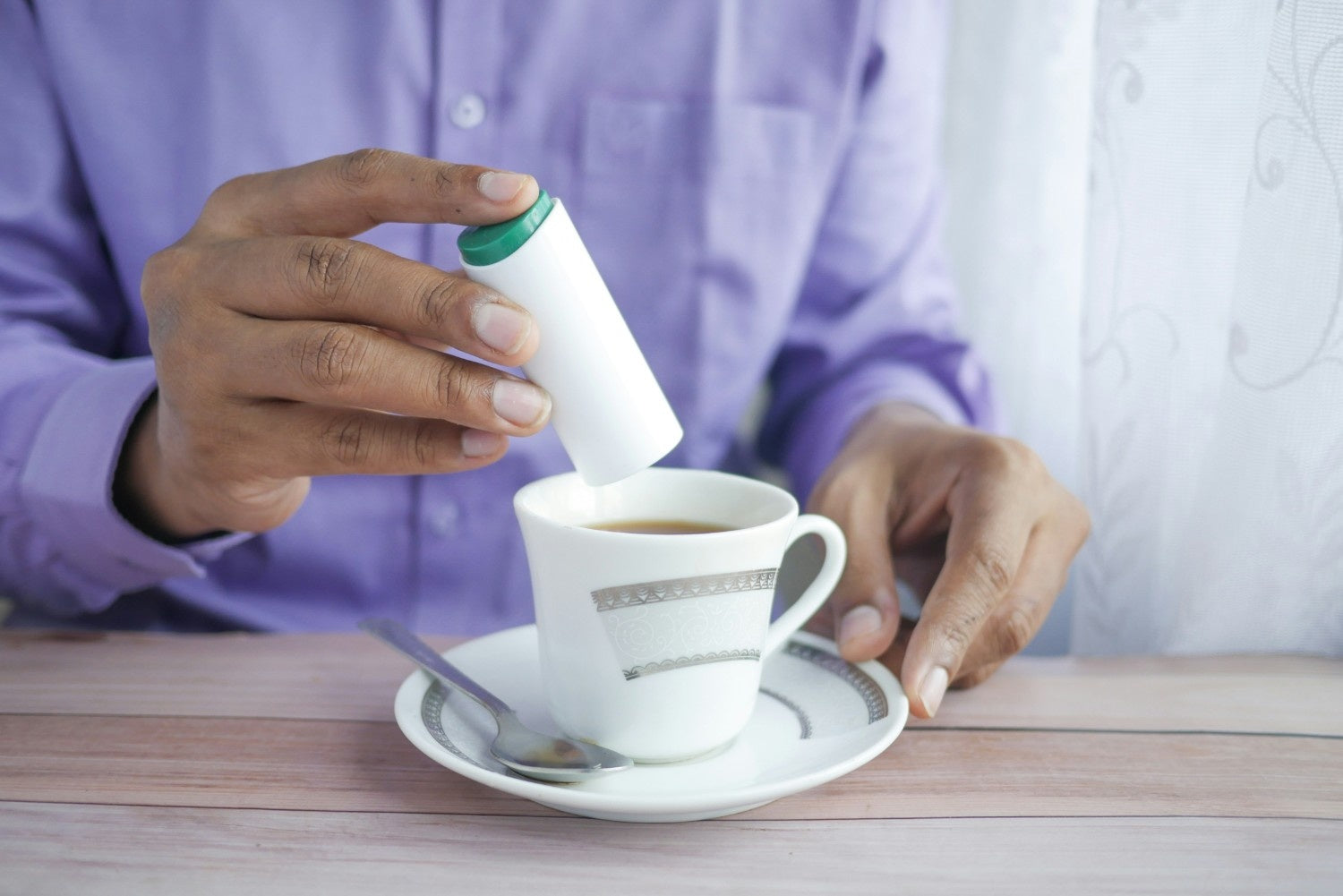
Key Takeaways
- Managing IBS involves selecting low FODMAP sweeteners that do not cause digestive issues.
- High-fructose sweeteners like agave and honey can lead to bloating and abdominal pain.
- There are many delicious low FODMAP alternatives that provide sweetness without discomfort.
Table of Contents
- The Science Behind FODMAP-Friendly Sweetening
- Your Complete Safe Sweetener Arsenal
- High FODMAP Sweeteners to Strategically Avoid
- High FODMAP Sweeteners: What to Avoid and Why
- Zero-Calorie Sweeteners: Navigating Artificial and Natural Options
- Practical Substitution Strategies for Every Recipe Type
- International Cuisine Applications
- Portion Control and Tolerance Management
- Shopping and Label Reading Intelligence
Low FODMAP Sweeteners: Complete Guide to Safe Options
Managing IBS doesn't mean sacrificing sweetness, it means choosing the right low FODMAP sweeteners that won't trigger digestive distress. While high-fructose options like agave and honey can cause bloating and abdominal pain, dozens of delicious alternatives deliver the sweetness you crave without the uncomfortable aftermath. Explore our curated selection of low FODMAP bundles for convenient, gut-friendly sweetening solutions.
The key lies in understanding fructose-to-glucose ratios and polyol content. This science-backed guide reveals exactly which sweeteners support digestive wellness, proper serving sizes, and practical substitution strategies for every recipe type. At Gourmend Foods, we've spent years perfecting flavor profiles that work harmoniously with sensitive digestive systems, and sweeteners play a crucial role in that mission. Browse our collection of low FODMAP recipes for inspiration on how to incorporate these sweeteners into everyday meals.
The Science Behind FODMAP-Friendly Sweetening
FODMAPs affect sweetener digestion through two primary mechanisms: excess fructose malabsorption and polyol fermentation. When sweeteners contain more fructose than glucose, the excess fructose can't be properly absorbed in the small intestine, leading to water retention and bacterial fermentation in the colon.
The glucose-fructose balance becomes critical because glucose acts as a co-transporter, helping fructose absorption. Table sugar (sucrose) splits into equal parts glucose and fructose, making it digestible for most people with IBS. However, sweeteners like agave nectar contain up to 90% fructose with minimal glucose, overwhelming the digestive system's capacity.
Polyols, sugar alcohols like sorbitol and mannitol, resist complete absorption regardless of glucose presence. These compounds draw water into the intestines and ferment readily, explaining why sugar-free products often trigger symptoms even when they're technically fructose-free.
Your Complete Safe Sweetener Arsenal

Traditional Table Sugars - The Reliable Foundation
Best for: Baking, beverages, and everyday sweetening needs
Regular white sugar, brown sugar (both light and dark), and raw sugar remain the gold standard for low FODMAP sweeteners. These sucrose-based options are safe up to ¼ cup servings, providing reliable sweetness without digestive complications. Brown sugar's molasses content doesn't affect FODMAP status, making it equally suitable for recipes requiring deeper flavor complexity.
Demerara and turbinado sugars follow identical safety profiles, while coconut sugar requires more caution, limit servings to 1 teaspoon due to naturally occurring inulin content that can trigger symptoms in larger quantities.
Premium Liquid Options - Natural Versatility
Best for: Sauces, marinades, and moist baked goods
Pure maple syrup stands out as the premier liquid sweetener, safe up to 2 tablespoons and offering complex flavor notes that enhance both sweet and savory applications. Rice malt syrup provides an excellent honey substitute with a 1-tablespoon safety threshold, particularly valuable in Asian-inspired dishes.
Golden syrup requires careful portion control, just 1 teaspoon maximum, due to fructan content, while glucose syrup and light corn syrup offer unlimited safety for those in elimination phases.
Specialty Natural Sweeteners - Unique Applications
Best for: International cuisine and specialized dietary needs
Palm sugar brings authentic flavor to Southeast Asian recipes with its 10-20% fructose content, safe up to ¼ cup servings. Pure dextrose (glucose) provides the ultimate elimination-phase option with zero fructose content, though it's only 70% as sweet as regular sugar.
| Sweetener Type | Safe Serving Size | Sweetness Level | Best Applications |
|---|---|---|---|
| White/Brown Sugar | ¼ cup | Standard | All-purpose baking, beverages |
| Maple Syrup | 2 tablespoons | Rich, complex | Pancakes, glazes, marinades |
| Rice Malt Syrup | 1 tablespoon | Mild | Asian dishes, honey substitute |
| Coconut Sugar | 1 teaspoon | Caramel notes | Coffee, light baking |
| Dextrose | Unlimited | 70% of sugar | Elimination phase baking |
High FODMAP Sweeteners to Strategically Avoid
Excess Fructose Offenders
Agave nectar tops the problematic sweetener list with 90% fructose content, despite marketing claims about being "natural" and "diabetic-friendly." Even health-conscious consumers get caught off-guard by agave's tiny 1-teaspoon safe limit. High fructose corn syrup varieties (HFCS-42, HFCS-55, HFCS-90) create similar digestive chaos, with the numbers indicating fructose percentages that overwhelm your intestines' absorption capacity.
High FODMAP Sweeteners: What to Avoid and Why
Agave nectar tops the excess fructose offenders list with 90% fructose content, nearly double that of table sugar. This "health food" darling triggers severe bloating and cramping in sensitive individuals, despite aggressive marketing positioning it as a diabetic-friendly alternative. The 1-teaspoon safe limit makes it practically useless for most recipes.
Honey presents a more complex picture with 38-40% fructose content. While not as problematic as agave, its excess fructose still triggers symptoms beyond the 1-teaspoon threshold. Raw, manuka, and processed varieties all share this limitation, making maple syrup the superior liquid sweetener choice.
Sugar alcohols (polyols) represent the second major category of problematic low FODMAP sweeteners. Sorbitol, mannitol, maltitol, xylitol, and erythritol resist complete absorption in your small intestine, creating two distinct problems: osmotic water retention leading to diarrhea, and bacterial fermentation producing gas and bloating. These compounds hide in sugar-free gums, diet sodas, protein bars, and "diabetic-friendly" chocolates, catching unsuspecting consumers off-guard with delayed but intense digestive distress.
Zero-Calorie Sweeteners: Navigating Artificial and Natural Options

FDA-approved artificial sweeteners offer reliable digestive safety for IBS management. Aspartame, acesulfame-K, saccharin, and sucralose bypass FODMAP pathways entirely, making them elimination-phase friendly options. Aspartame requires PKU warnings but provides clean sweetness at 200x sugar's intensity. Sucralose delivers 600x sweetness with excellent heat stability for baking applications.
Stevia leads natural zero-calorie options with rebaudioside-A content determining quality and aftertaste intensity. The 2-teaspoon daily limit accommodates generous sweetening needs, while its 300x sweetness factor requires careful measurement. Combine stevia with small amounts of low FODMAP sweeteners like dextrose to mask any bitter notes and achieve more sugar-like flavor profiles.
Monk fruit extract delivers 150-200x sweetness without FODMAP concerns, though its higher cost limits widespread adoption. This luo han guo derivative works exceptionally well in beverages and cold applications, where its clean finish shines without the heating challenges that sometimes affect stevia.
Key Insight: Artificial sweeteners receive unfair criticism in wellness circles, but current research shows no direct IBS symptom triggers. Individual tolerance varies more with gut microbiome composition than sweetener type, making personal experimentation during reintroduction phases more valuable than blanket avoidance.
Practical Substitution Strategies for Every Recipe Type
Baking conversions require understanding how different sweeteners affect texture and moisture. Replace high FODMAP honey with maple syrup using a 1:1 ratio while reducing other liquids by 2 tablespoons per ¼ cup. Substitute agave with a combination of 2 tablespoons maple syrup plus 2 tablespoons brown sugar for equivalent sweetness and moisture content.
Beverage applications benefit from liquid sweeteners that dissolve easily. Maple syrup excels in hot beverages like coffee and tea, while rice malt syrup works beautifully in Asian-inspired drinks. For cold beverages, create simple syrups using table sugar and water, or use liquid stevia drops for zero-calorie options. Try our low FODMAP French vinaigrette recipe for a delicious way to incorporate sweeteners into savory dishes.
Dessert adaptations depend on crystallization properties and caramelization capabilities. Brown sugar creates superior caramel flavors compared to white sugar alternatives, while coconut sugar (limited to 1 teaspoon) adds complexity to chocolate desserts. Dextrose works excellently for meringues and delicate confections where pure sweetness without competing flavors is essential.
| Recipe Type | Best Low FODMAP Option | Conversion Ratio | Special Notes |
|---|---|---|---|
| Cakes & Quick Breads | Brown Sugar | 1:1 replacement | Adds moisture and flavor depth |
| Cookies & Bars | Cane Sugar + Maple Syrup | ¾ cup sugar + 2 tbsp syrup | Creates chewy texture |
| Beverages | Maple Syrup | 2 tbsp per serving | Dissolves completely when warm |
| Caramel/Toffee | Brown Sugar | 1:1 replacement | Essential for proper caramelization |
| Asian Cuisine | Rice Malt Syrup | 1 tbsp per serving | Authentic flavor profile |
International Cuisine Applications
Asian-inspired dishes traditionally rely on palm sugar's complex caramel notes, which you can replicate using brown sugar within the ¼ cup limit. Rice malt syrup provides authentic thickness for glazes and marinades in Thai and Chinese cooking. For Japanese applications, combine 2 tablespoons maple syrup with 1 teaspoon brown sugar to mimic mirin's sweetness profile. Discover our low FODMAP miso salmon recipe for a flavorful, gut-friendly take on Japanese cuisine.
Middle Eastern recipes often call for date syrup or pomegranate molasses, both high in excess fructose. Create similar depth by reducing maple syrup with a pinch of lemon juice and salt, concentrating flavors while maintaining digestive safety. This technique works beautifully in tagines and grain pilafs.
European baking traditions frequently specify golden syrup, limited to 1 teaspoon on low FODMAP protocols. Replace larger quantities with equal parts maple syrup and brown sugar, adding a tablespoon of water to match the original moisture content. This substitution maintains the characteristic chewiness in flapjacks and sticky toffee puddings.
| Traditional Sweetener | FODMAP Status | Safe Substitute | Conversion Ratio |
|---|---|---|---|
| Palm Sugar | Low FODMAP (¼ cup) | Brown Sugar | 1:1 replacement |
| Date Syrup | High FODMAP | Maple Syrup + Lemon | ¾ maple + ¼ lemon juice |
| Golden Syrup | Limited (1 tsp) | Maple + Brown Sugar | ½ maple + ½ brown sugar |
| Honey | Limited (1 tsp) | Rice Malt Syrup | 1:1 replacement |
Portion Control and Tolerance Management

Serving size science relies on Monash University's systematic testing to establish safe thresholds for low FODMAP sweeteners. These limits reflect the point where FODMAP content remains below symptom-triggering levels for 75% of IBS patients. Exceeding these amounts, even with "safe" sweeteners, can overwhelm your digestive system's absorption capacity and trigger familiar symptoms. For more details, see the Monash University blog on sweeteners and the low FODMAP diet.
FODMAP stacking occurs when multiple low FODMAP foods consumed throughout the day accumulate to problematic levels. Your morning coffee with 2 tablespoons maple syrup, afternoon snack with ¼ cup brown sugar cookies, and dinner dessert with coconut sugar can collectively exceed safe daily limits despite individual portion compliance.
Timing strategies improve tolerance by spacing sweetener consumption across meals and combining them with proteins or fats that slow absorption. Consuming low FODMAP sweeteners on empty stomachs increases symptom likelihood, while pairing them with balanced meals enhances digestive comfort.
Personal Tolerance Discovery: During reintroduction phases, test one sweetener type weekly using graduated increases: start with half the established safe serving, increase to full serving after 3 symptom-free days, then cautiously explore your personal upper limit. Track symptoms for 48 hours after each test, as polyol reactions can delay up to 24 hours.
Individual variation means some people tolerate double the research-established limits while others react to smaller amounts. Genetics, gut microbiome composition, stress levels, and concurrent medications all influence personal thresholds, making systematic self-experimentation more valuable than rigid adherence to published guidelines. For further reading on the latest research, check out this recent study on FODMAPs and digestive health.
Shopping and Label Reading Intelligence
Hidden sweetener identification requires understanding alternative names manufacturers use to obscure problematic ingredients. Sorbitol appears as "E420," mannitol as "E421," and high fructose corn syrup disguises itself as "glucose-fructose" or "fructose-glucose syrup" depending on predominant sugar content.
Unexpected sources include seemingly savory products where sweeteners enhance flavor profiles. Worcestershire sauce, ketchup, barbecue sauce, and salad dressings frequently contain high fructose corn syrup or honey. Medications, vitamins, and protein powders often use sorbitol or mannitol as inactive ingredients, triggering symptoms in sensitive individuals who never suspect their supplements. Try our low FODMAP crisp roasted baby potatoes for a savory dish that avoids hidden sweeteners.
Natural flavors ambiguity creates label-reading challenges since this umbrella term can include fruit-derived fructose concentrates or polyol extracts. When in doubt, contact manufacturers directly, most maintain allergen hotlines that can clarify FODMAP-relevant ingredients for specific products.
Reliable brand selection focuses on companies with transparent ingredient sourcing and consistent quality control. For baking applications, C&H and Domino provide reliable cane sugar options, while Wholesome and Madhava offer organic alternatives. Maple syrup quality varies significantly, choose Grade A Dark Robust for cooking applications and Grade A Golden Delicate for beverages where subtle flavor matters.
Budget-friendly strategies include buying basic white and brown sugar in bulk, since these low FODMAP sweeteners store indefinitely in airtight containers. Generic store brands of pure maple syrup and rice malt syrup offer identical FODMAP profiles to premium options at 30-40% lower costs, making digestive wellness accessible regardless of grocery budget.
Frequently Asked Questions
What makes a sweetener low FODMAP and how does the fructose-to-glucose ratio impact digestive tolerance?
A low FODMAP sweetener has a balanced or lower fructose-to-glucose ratio, which supports better absorption in the small intestine. Since glucose helps transport fructose, sweeteners with equal or more glucose than fructose are easier to digest and less likely to cause symptoms like bloating.
Which natural sweeteners are considered safe for people managing IBS on a low FODMAP diet?
Natural sweeteners like stevia, pure maple syrup (in small amounts), and rice malt syrup are generally safe for those managing IBS on a low FODMAP diet. These options provide sweetness without overwhelming the digestive system with excess fructose or polyols.
Why are certain sweeteners like agave nectar and honey more likely to cause bloating and abdominal pain?
Agave nectar and honey have high fructose content with little glucose, which can exceed the small intestine’s absorption capacity. This excess fructose draws water into the gut and ferments in the colon, leading to bloating and abdominal discomfort.
How can I effectively substitute high FODMAP sweeteners with low FODMAP alternatives in everyday recipes?
To substitute high FODMAP sweeteners, choose low FODMAP options like stevia or maple syrup and adjust quantities to maintain sweetness without overdoing fructose. Experiment with portion sizes and combine sweeteners when needed to balance flavor and digestive comfort.
